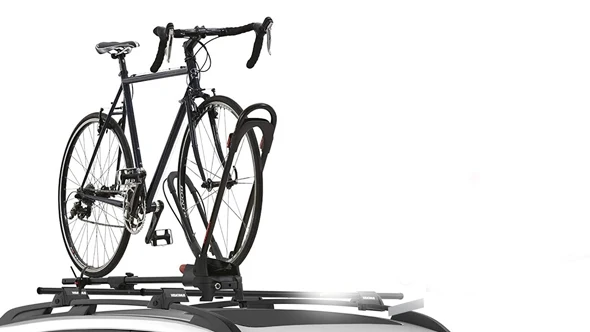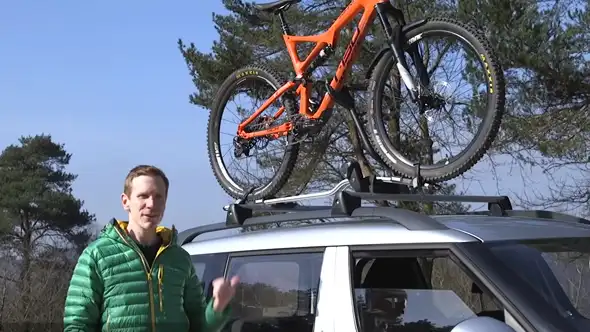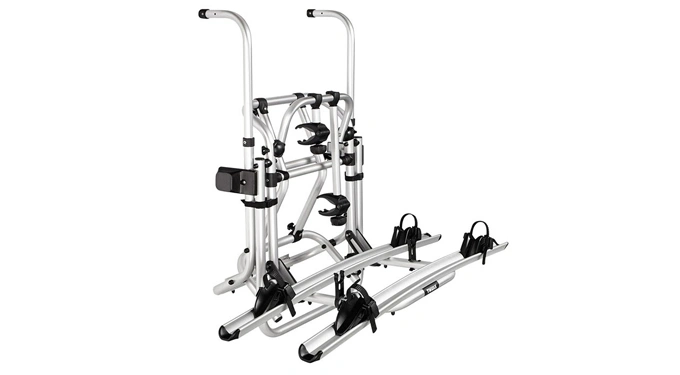Biking is a great way to get around but keeping your bike rack from bouncing and swaying is essential. You can damage your car and bike rack if the rack bounces while you’re driving. Not installing the rack correctly can also lead to an accident.
People’s first instinct is to use bungee cords or ropes to tie down the rack, but this can do more harm than good. The cords can rub against the paint on your car and damage it, or they can come loose and cause the rack to bounce even more.
So you have to find out how to keep the bike rack from bouncing while driving. This can save you a lot of hassle and keep you and your belongings safe. We will cover some methods for preventing bounces in your bike rack.
Primary Reasons That Cause Bike Racks to Bounce

Bike racks are a great way to transport your bikes, but they can be dangerous if not properly secured. If your bike rack starts to sway, check the hitch first to ensure it’s tight. If the rack is not level or tight enough, it will move around more, causing it to bounce.
Several reasons can cause a bike rack to bounce:
- The hitch does not connect properly
- Insufficient tightening of the racks
- Bikes are not sufficiently secured
- The rack is overloaded
- There’s too much wind resistance
- You’re going too fast
- You hit a bump or pothole
- The tires are low on air pressure
- The roads are slippery
- Poor or old condition of the rack
See if you can identify the cause of your rack’s bouncing if it seems to be bouncing more than usual. Once you know what’s causing the rack to bounce, you can take steps to fix it and prevent it from happening again in the future.
How to Keep Bike Rack From Bouncing: 5 Tips

The first thing that you need to do is to make sure that all the straps are tightened. The rack shouldn’t be too loose, it will start to bounce and sway while you are driving. You should also check the straps regularly to ensure they are not loose.
There are a few ways to reduce the bouncing of your bike rack while driving. If you use the correct method, you can be sure that your rack will not move an inch while driving. Here are some ways to avoid bouncing bike racks:
1. Using a Hitch Clamp
A hitch clamp is a simple but effective way to make sure your bike rack stays in place while you’re driving. The hitch clamp attaches to the hitch receiver on your vehicle and prevents the bike rack from moving independently of the vehicle.
Most bike racks come with a hitch clamp, but if yours doesn’t, they are relatively inexpensive and easy to find at most hardware stores. Simply place the hitch clamp over the receiver and tighten the bolts.
The bolts may need to be tightened with a wrench, but once on the rack, they should be secure. With a hitch clamp, you can rest assured that your bike will arrive at your destination safely and without any damage.
2. Attaching the Rack to the Vehicle With Straps
If your bike rack doesn’t have a hitch clamp, you can still keep it from bouncing by attaching it to the vehicle with straps. This can be done by looping the strap around the rack’s frame and then through the vehicle’s open door.
By running a series of straps around the frame of the rack and attaching it to the vehicle, you can create a much more secure connection that will help to keep the rack from moving around. Also, using multiple straps will provide even more stability and security.
Some straps are made of metal and have hooks on the end that can be attached to the car. These are the most secure types of straps. Softer straps made of fabric or nylon are also available and can be just as effective. So, it just depends on your personal preference.
3. Use Anti Rattle Devices
Anti-sway devices may be helpful if your bike rack is especially prone to swaying. These devices keep the rack stable during driving by attaching to the frame. They come in various shapes and sizes, but all serve the same purpose, tightening the hitch rack and preventing it from moving.
In most cases, they can be installed in just a few minutes and do not require special tools. Best of all, they are relatively inexpensive, making them a great way to keep your mountain bike safe during transit. Also, don’t forget to check that the device is compatible with your rack before purchasing.
4. Use a Weight Distribution Hitch
A weight distribution hitch is the best way to prevent bounces on your bike rack. If you frequently transport heavy bikes or multiple bikes, you may want to consider using a weight distribution hitch. These hitches distribute the load more evenly to keep the rack from bouncing.
Distributing the weight of your bikes evenly ensures a smooth, level ride. It also helps to improve steering and stopping and makes it easier to tow at the maximum capacity allowed by your hitch bike rack. If you’re worried about trailer sway, an axle with weight distribution will keep your bike safe and secure.
5. Install a Cushion Joint In the Hitches
If you’re still having trouble with the bike rack bouncing, you may consider installing a cushion joint in the hitch. This will help to absorb some of the shock and vibration, making it less likely for the rack to bounce.
This device helps to absorb the vibration from the road, making it much easier to keep the trunk rack steady. Besides, it also helps to prevent the bicycle rack from swaying side-to-side, which can also be a problem when traveling at high speeds.
Is It Normal For a Bike Rack to Bounce?
While a bike rack will never be as solid as a wall, it is normal to bounce some, especially if it’s loaded down with bikes. The bike’s weight will help keep it in place, but the rack will likely bounce after hitting a bump or pothole.
The key is to ensure it’s not bouncing excessively, which could cause the bikes to come loose and fall off. The bike rack may bounce more than you’d like, try tightening the straps or adding additional weight to the rack (if possible). Make sure all bolts are tightened, and the rack is installed correctly.
What are the Consequences of the Bike Rack Bounces?

The bike rack is an essential piece of equipment for any cyclist. It provides a safe and secure place to store your bike, and it can also help to protect your car from scratches and scrapes. When transporting your bikes, it’s important to ensure that the rack is secured correctly.
The bounce bike rack causes many problems. Here are some situations where you may fall due to a bouncing bike rack:
- There is a possibility of an accident with the bouncing rack
- You could hit your head on the rack
- The bikes could come loose and fall off
- If you veer off course, you could get hit by traffic
- Your car can lose control
- There is a risk of car damage
- Traffic jams could result from your actions
- You could injure yourself or someone else
As you can see, it’s imperative to ensure that your bike rack is appropriately secured. If it starts to bounce, be sure to stop and check it.
How Do You Install a Hitch Clamp to Reduce Bouncing?
If your bike rack is bouncing, a hitch clamp is the first solution you can attempt to reduce the swaying of your road bike. The hitch clamp is very easy to install and requires no special skills. All you need is a wrench set and some time.
The first thing you should do is park your car on a flat surface. Then, you need to find your vehicle’s receiver for the hitch. It is usually located near the back of the car. Afterward, you must take the trailer hitch clamp and align it with the hitch receiver. Tighten the bolts on the hitch clamp once it is aligned.
You need to ensure that the hitch clamp is tight enough to grip the hitch receiver securely. If it is not tight enough, your bike racks will still swing. Then, you need to check if the anti-rattle device is working by trying to push and pull your bike racks.
How Does a Hitch Tightener Work for a Bouncing Bike Rack?

What you do is just slide the hitch clamp through the receiver. Slide it in, put the bolt in to see what it’s gonna do. Gonna take all that play out of there, so your bike rack doesn’t bounce around. You don’t want your bikes bouncing around because that can damage them.
Also, if you have a lot of weight in your bike rack, it can cause problems with your car if it’s not secure. So, a hitch tightener is just a simple way to ensure your bike rack is secure and won’t damage your car or your bikes.
Take the hitch clamp and feed it through the receiver, put the bolt in, and tighten until there’s no play. Your hitch tightener will stop your bike rack from bouncing around and causing damage. If your bike rack has a lot of weight, check the hitch’s tightness regularly.
The Importance of Reducing Bike Rack Bounce
Now that you know how to keep your bike rack from bouncing, it’s essential to understand why it’s so important. As mentioned before, bikes and cars can be damaged by bouncing. Accidents can also result if you’re not careful.
Therefore, bike rack bounce must be reduced for the sake of safety. By keeping your bike rack secure, you can avoid accidents and damage to your property. So if you’re transporting your bikes, take the time to secure your rack correctly. It could save you a lot of trouble in the long run.
Topics of Discussion:

